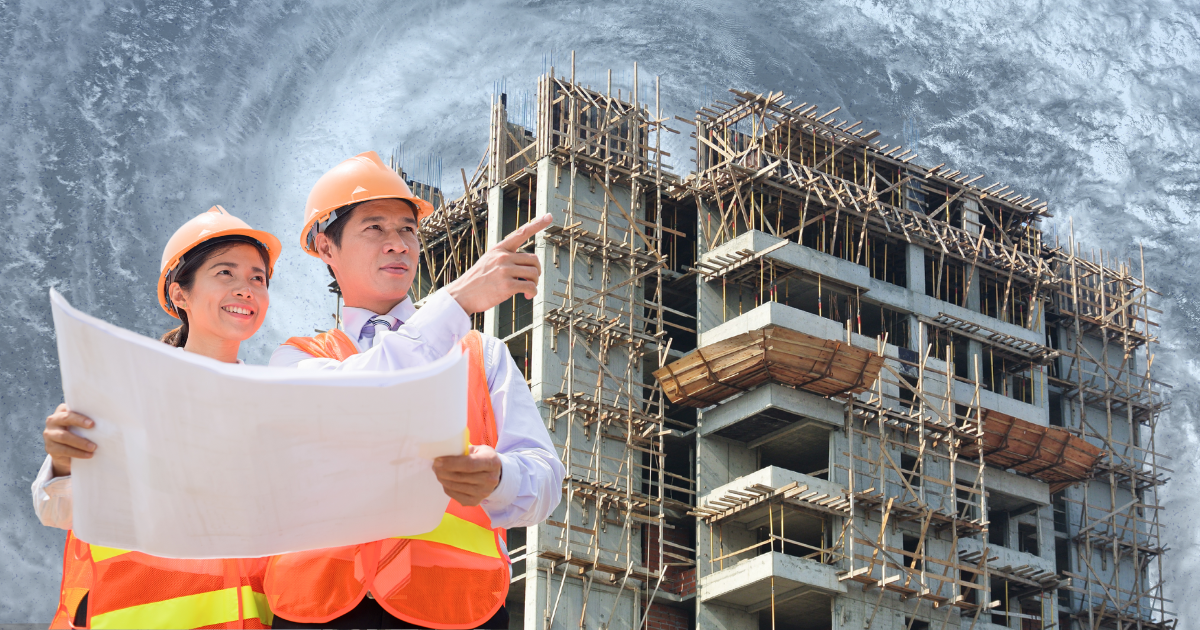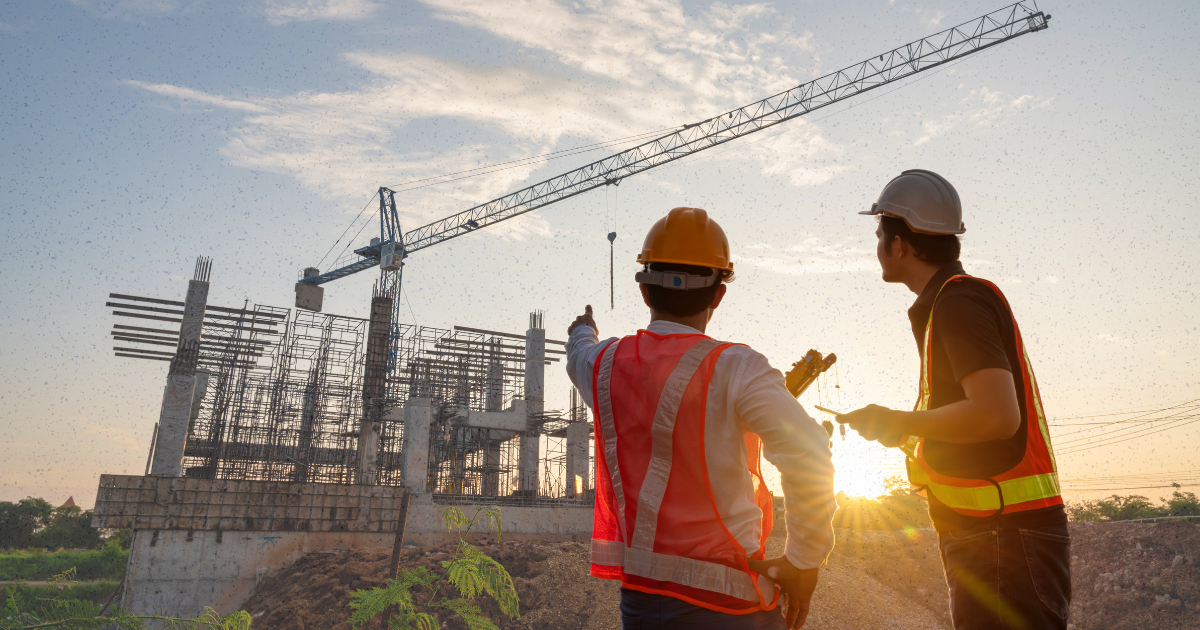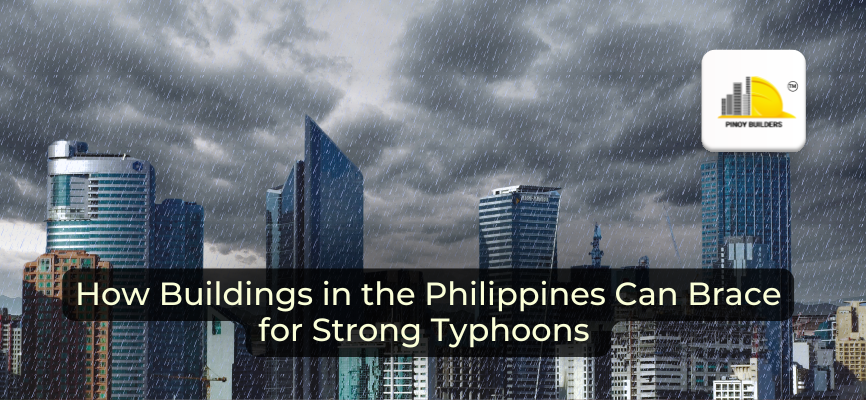Typhoon season is beginning in the Philippines, with the most intense storms expected from the beginning of next month until October. Nearly 70% of all typhoons develop during this period. And as storms like Yolanda and Odette have shown, their force can certainly devastate properties and communities.
With multiple systems forecasted this year, the question is time-sensitive: are our buildings in the country truly built to last through the worst? Typhoon resistance is an essential feature in any structure; it should never be overlooked. In this article, we will shed light on our current construction standards, take a look at existing essential structural strategies, and discuss what still needs to be improved to meet the rising threat of stronger typhoons.

Assessing Current Building Standards
Building design in the Philippines follows the National Building Code (PD 1096), but contrary to common belief, the Code does not explicitly mention typhoons or building regulations to enhance resistance to them. Instead, it outlines general structural requirements to withstand environmental forces.
One relevant clause is found in Section 708(g), which states:
“The wind load for roofs shall be at least 120 kilograms per square meter for vertical projection.”
This provision sets a minimum standard for roofing systems to resist wind pressure. While it doesn’t reference typhoons directly, it implies the need to account for strong wind forces, common in the country’s climate.
For more specific guidance, engineers refer to the National Structural Code of the Philippines (NSCP 2015). When it comes to wind loads, the NSCP adopts the ASCE 7-10 as its basis. This standard from the American Society of Civil Engineers outlines the minimum design loads for buildings and other structures, providing detailed requirements to help protect lives during disasters.
Section 101.2 of NSCP 2015 defines its purpose as establishing minimum structural design requirements to protect life, property, and public welfare. It governs the design, construction, and material quality of all buildings and structures within its jurisdiction. This feature makes the NSCP a vital tool for designing structures capable of withstanding typhoon-strength winds.
However, challenges remain in real-world implementation. This is especially true in the Philippines, where construction is informal or cost-driven in many areas. Not all practitioners follow the code rigorously, and enforcement continues to be uneven across the country.
Key Structural Considerations for Typhoon-Resilient Buildings
To make buildings more resilient during typhoons, engineers and builders focus on several key design elements:
Wind Load and Elevation Planning
Structures, especially those in coastal or flood-prone areas, must be designed to withstand regional wind pressures and account for rising water levels.
Roof Design and Anchorage
- Use hip roofs with four sloping sides and steep pitches to deflect wind
- Avoid large overhangs and instead use smaller, segmented roof sections
- Secure roof framing with collar beams and closely spaced rafters (max 3 ft apart)
- Fasten galvanized corrugated metal roofing to lag-bolted perlins
- Apply hurricane straps to tie rafters to wall plates
- Anchor wood wall plates to the slab or floor system using bolts every 3 feet
Wall and Structural Bracing
- For wood walls: use post-and-beam systems with diagonal bracing and full stud connections
- For masonry walls:
- Integrate vertical steel rebar and fill hollow blocks with concrete
- Add ring beams with anchor bolts to attach the roof securely
- Reinforce all door and window openings with vertical rebar
- Brace all walls to resist lateral wind pressure
Foundation and Column Base
- Use poured concrete foundations with steel connections embedded during the pour
- Avoid adjustable or after-set connectors that may fail under wind stress
- Space anchor points every 3 to 4 feet to hold the entire load path together
Typhoon-Resistant Materials
- Use fiber cement boards, steel framing, or treated wood with proper joinery
- Prioritize connection quality over material strength alone
- Reinforce roofing with tongue-and-groove sheathing for added wind resistance
Wind Tunnel Testing (for high-rise or critical structures)
- Required for tall or critical buildings
- Simulates real wind conditions to guide structural adjustments before construction
These components are essential in reducing typhoon damage and ensuring safety, especially in areas frequently hit by strong storms.

Roads, Bridges, and Public Infrastructure: DPWH Approach
The Department of Public Works and Highways (DPWH) actively monitors the structural integrity of roads, bridges, and public buildings, especially during disasters. District offices have established maintenance and quick response teams to handle road slips, landslides, and damage from heavy rains or typhoons.
Key measures include:
- Pre-disaster preparation – DPWH offices conduct regular disaster drills, including earthquake simulations, in coordination with local risk management councils.
- Quick response capability – Dedicated teams are dispatched immediately to assess and repair damaged infrastructure during or after a storm.
- Community safety focus – Public assurances and real-time coordination with the Provincial Disaster Risk Reduction and Management Office (PDRRMO) support faster response and risk awareness.
- Ongoing risk management – Structural assessments and damage forecasts help guide decisions on repairs, upgrades, or road closures to maintain public safety.
These efforts reflect a broader shift toward climate-resilient infrastructure, where readiness, speed of response, and community coordination are as vital as the design itself.
Building for a Safer, Stronger Future
Enforcing building permits and code compliance should be a national priority. For example, in areas most exposed to typhoons, wind tunnel testing should be mandatory for commercial and multi-story buildings. On the other hand, residential projects can benefit from incentives for using certified typhoon-resilient materials.
Training local builders and increasing public awareness through LGU partnerships will raise construction quality. We already have the tools, knowledge, and standards for building typhoon-ready structures. The next step is to apply them more consistently and think ahead, not just rebuild after the fact.
Stronger buildings don’t just save property; they save lives. The storms will come. The question is whether we’ll be ready.
References
Design Guidelines for Hurricane Resistant Buildings. (n.d.). Doug White Architecture. https://dwacaribbean.com/design-guidelines-for-hurricane-resistant-buildings/
Mabaquiao, P. S. (n.d.). DPWH monitors safety of national roads, public buildings. Relief Web. https://reliefweb.int/report/philippines/dpwh-monitors-safety-national-roads-public-buildings
Quizlet. (n.d.). National Structural Code of the Philippines. Quizlet. https://quizlet.com/study-guides/national-structural-code-of-the-philippines-8d197890-d727-4fd4-a076-792e79fb6e1a










